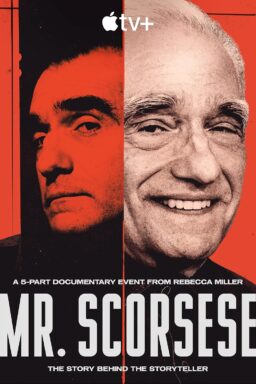One can usually find a few hidden gems in the New York Film Festival Documentary section. This year brings such varied topics as “American Dharma,” Errol Morris’ take on Steve Bannon and “Divide and Conquer,” Alexis Bloom’s exploration of the life of the creator of both MSNBC and Fox News. Subtitled “The Story of Roger Ailes,” Bloom’s fair and balanced film is an often harrowing look at the man directly responsible for the elections of Richard Nixon, George H. W. Bush and that current guy in the White House. Ailes media savvy, which was admittedly brilliant and probably unmatchable, made him a political kingmaker whose reach is still affecting us even after his death in 2017.
“When I go, people are going to say awful things about me,” reads one Ailes quote cited here, along with another that pretty much sums up the philosophy of the current political climate: “If the audience likes you enough, they will forgive you for anything you do wrong.” It’s this kind of media manipulation that Ailes strove for throughout his career. One former Fox News anchor says the network’s main goal was to “rile up the crazies” by keeping them in a state of constant anger and false victimization. The angrier people are, the more glued to the TV they’ll be. And if the message is coming from someone with whom the viewers can identify, they’ll watch every day and the money will just pour into the pockets of Ailes and his boss, Rupert Murdoch.
Bloom interviews several people, some of whom are surprising talking heads. We learn that Austin Pendleton was Ailes’ middle school classmate back in Warren, Ohio. Pendleton gives one of the few portraits of Ailes that doesn’t include his professional life. On that side of the equation, we’ll hear from John Cook, Glenn Beck and former Fox News journalist Alisyn Camerota, who is now on CNN. We’ll see enough clips from Fox News to own the libs (I cop to wanting to pull my eyes out), but Bloom also informs us that Ailes’ first network venture, America First, was eventually taken over and purchased by Bill Gates and rechristened MSNBC. It’s hinted that this coup was the reason Ailes created Fox News.
Bloom also covers the sexual harassment lawsuits and claims that got Ailes kicked out of the kingdom he created. This section is particularly harrowing in the age of Time’s Up and MeToo, culminating in a credible claim that Ailes’ ouster was the first example of someone getting their just desserts as a result of these movements. While Bloom doesn’t interview Gretchen Carlson or Megyn Kelly, she does show several other women who had tales of how rebuffing Ailes’ sexual advances was grounds for him to ruin their careers. Each woman’s pain is vividly on display, even if the harassment happened decades ago.
“Divide and Conquer” shows how Ailes’ tactics and philosophies are still in effect after his demise. We can see and hear it in the GOP Congress members, their constituents and their president, who gets the last word in this film. If you want to get a feel for why the political climate is the way it is now, this portrait of a mad genius is a must-see.

Speaking of Fox News and Megyn Kelly, I recall their warped, overripe coverage of the New Black Panther Party, which was supposed to have been beating up White people who were trying to vote back in 2012. A far more truthful portrayal of a Mississippi branch of the group can be found in Roberto Minervini’s documentary “What You Gonna Do When the World’s on Fire?” Shot in sometimes harsh black and white, Minervini’s camera also observes the camaraderie between two brothers named Ronaldo and Titus as well as chronicles the exploits of Judy Hill, a recovering addict and singer who runs a bar in New Orleans.
As the original Black Panthers did, the New Black Panther party is shown educating people about Black history, feeding homeless people and protesting the police shootings of unarmed Black men. The NBP crew features Krystal Muhammad, a fearless spokesperson who is investigating brutal hate crimes and murders during the film. The group explains its mission for viewers, but we can also deduce what their goals are just by watching them interact with the neighborhood. Their protests ultimately lead to a confrontation with the police, which Minervini unflinchingly records for posterity.
Minervini supplements the New Black Panthers’ story with scenes involving the brothers and their mother and Judy’s time in the bar. The film is comfortable just letting its subjects talk and tell their stories, with several standout scenes for all involved. Judy has an excellent scene sharing her story with current addicts, and the brotherly scenes will intrigue and touch anyone who’s ever had a brother. At 123 minutes, “What You Gonna Do When the World’s On Fire” becomes a tad redundant as it plays out, and more than once I felt that Minervini’s gaze made his subjects out to be Others. Still, this is an important film about Black life, a good companion piece to the superior “Hale County This Morning, This Evening.”

Since I am the resident film noir addict, I signed up for two restorations playing in NYFF’s Revivals section. The more obscure of the two, 1947’s “The Red House” stars Edward G. Robinson as Pete Morgan, a man with big, nasty secrets that are slowly driving him insane. His sister Ellen (Dame Judith Anderson) has given up a chance at romantic happiness with the town doctor so that she may keep Pete in check and help raise his ward, Meg (Allene Roberts). The Morgan farm is off-limits to the townsfolk, most of whom think the family is too creepy for company.
That changes when Pete asks Meg to invite high school hunk Nath (Lon McCallister) to do some paid chores for him. Meg harbors a secret crush on Nath, but he’s already beholden to the town’s drop-dead gorgeous firebrand Tibby (a deliciously fierce and nasty Julie London). Tibby is the type of bad girl whose never worth the trouble but always worth the time. She thinks Meg is way too homely to take her man, but that doesn’t stop her from throwing major shade at our heroine.
Out of curiosity, and despite Tibby’s objections, Nath accepts Meg’s work offer. Alas, curiosity is the last thing Pete wants running rampant on his farm, especially when it concerns the mysterious red house hidden deep in an even more mysterious and forbidden patch of woods. When Nath mentions he’ll be cutting through those woods as a shortcut to shave an hour off his walk home, Pete goes bonkers. He demands Nath avoid these woods, as they are haunted and potentially deadly. Veteran director Delmar Daves lets us think Pete has a point by staging a scary encounter that leaves Nath mildly injured.
Neither the woods nor the red house turns out to be literally haunted. But that doesn’t mean that evil forces aren’t present throughout “The Red House,” starting with Pete’s consuming obsessions and branching out to the actions of the sleazy, sexy guardian of Pete’s land, Teller (Rory Calhoun). What happened in the titular house is warped enough for the best of gothic tales. Daves appends these elements with the typical noir ingredients of murder, jealousy, madness, guilt, sex and sin.
“The Red House” is gorgeously shot in black and white by Bert Glennon, whose images are almost Lynchian at times. Merrill White’s editing is masterful—watch for the companion shot that precedes Pete snuffing out a candle with his hand—and Daves’ direction is tight and edgy. Plus, Edward G. Robinson gets a visual send-off that’s simultaneously beautiful and horrifying. Robinson plays it to the hilt, too, succumbing to his fate with more relief than the average noir victim gets to display.

Edgar G. Ulmer’s legendary 1945 classic, “Detour” also gets a much needed restoration, as it has only existed in very poor, scratchy prints that were practically unwatchable. According to the NYFF catalog blurb, this new print is approved by Martin Scorsese himself. As I will not have seen the restored version before press time, I can only speak to the film itself at this moment. A staple of the noir genre, this is a nasty, brutish and short piece of work, clocking in at 68 minutes and proudly displaying its Poverty Row studio origins.
Tom Neal plays Al, a down on his luck drifter who narrates the tale. Before bad luck befell him, he was a virtuoso jazz piano player madly in love with blonde singer Sue Harvey (Claudia Drake). Sue decides to motor west so she can try her luck in Hollywood, leaving Al to follow her once he gets enough dough. But Sue’s not this film’s dangerous woman. That role goes to tough-as-nails Ann Savage, whose Vera doesn’t enter the picture until halfway through its runtime. Savage makes the most of her screen time, spitting her pitch black barbs of dialogue at Al while blackmailing him for a murder he didn’t commit even though he disposed of the dead body. And while it may seem that Vera’s the femme fatale, she’s actually upstaged by fate itself, whose nasty twists prove to Al who the real villain is. After all, you can’t spell fatale without fate.












